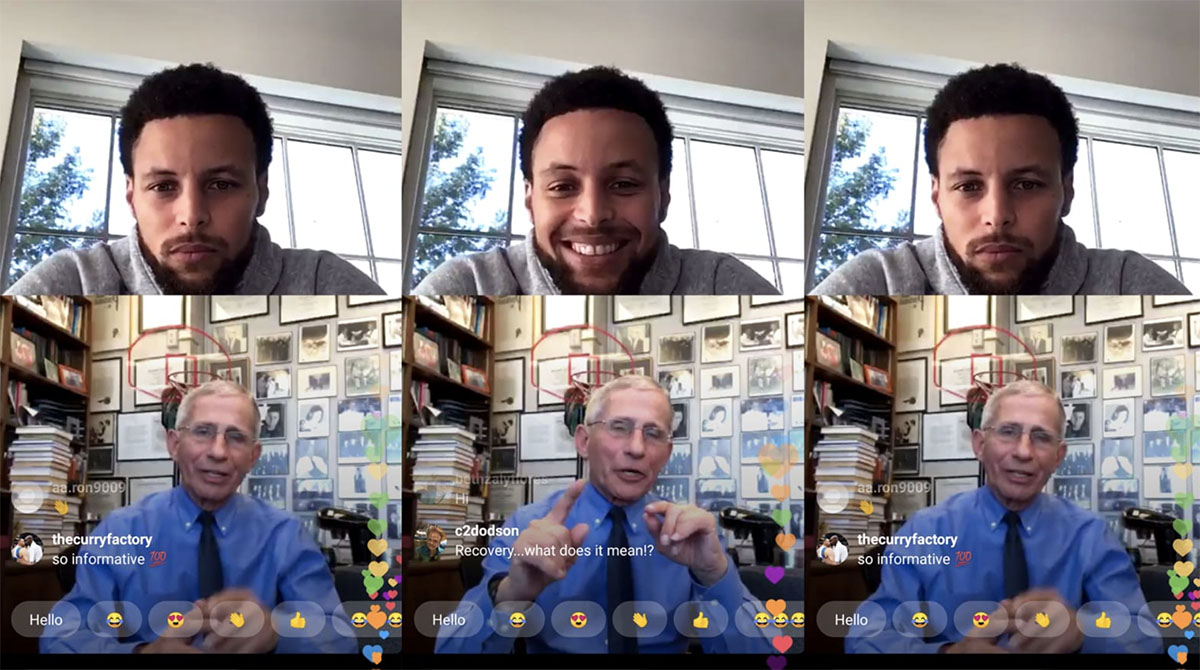On March 26, Dr. Anthony Fauci, the director of the National Institute of Allergy and Infectious Diseases, participated in a one-on-one question and answer session. But the interview wasn’t conducted by an experienced journalist, nor was it broadcast on network television. The host of this conversation was NBA superstar Steph Curry, the venue was Instagram Live, and the number of viewers was mind-boggling.
The impact of the 28-minute conversation between Curry and Fauci may result in a startling new wave of what famed sports announcer Howard Cosell once called the “jockocracy”—having celebrity athletes in the broadcast booth despite not being an expert in a particular topic or having polished journalism skills.
Curry is not a doctor, nor is he a trained journalist. However, he does care deeply about the community and has been active during the pandemic on social media to promote awareness and motivate people to take needed precautions. This Q&A was him taking another step to try and help others in need and reach an audience that might not be heeding the warnings about COVID-19. In the process, he established himself as a new platform that could revolutionize the way people obtain and consume their news.
The lighting was bad, the audio was occasionally choppy, the discussion began with a number of technical difficulties—and viewers loved it. No one complained about Curry’s unpolished interviewing skills. Instead over 50,000 people watched and participated in real time, the screen blowing up with comments and emojis. Barack Obama, Justin Bieber, and former teammate Andre Iguodala tuned in.
The 50,000 people who saw and engaged live is only a fraction of the event’s actual impact. Add in Curry’s 14 million Twitter followers and 34 million Instagram fans, and the reach is the envy of any major news broadcaster. It’s especially impressive considering Curry’s target audience: a younger generation, who, up until this point, has not connected with the COVID-19 crisis.
One of the biggest hurdles to slow the pandemic has been reaching American youth and convincing them to take the virus and social distancing seriously. CNN’s Anderson Cooper hasn’t been able to do it. The White House, either. Steph Curry, from his home with nothing but his massive following and Internet access, was able to accomplish in 28 minutes what others have attempted to communicate for months. While news organizations have long been our source for current events, the popularity of this Q&A with Fauci poses an interesting question: Could that designation go to athletes like Curry in the not-so-distant future?
Prominent athletes have always been able to use their voice to influence what we eat, what we drink, and what we buy. What took place on March 26 was different. The conversation between Curry and Fauci shows that that influence has taken a journalistic turn. In the process, journalism may be on the cusp of entering a new phase where a respected and popular athlete can quickly and easily become a news outlet, network, and talk show host all in one. There are limitations of course, and objectivity will be more important than ever, but Curry’s experiment proves that there’s a new type of platform that can reach enormous numbers of people and change the way the avid and casual fan gets their information and news—all with just a smartphone and WiFi.



